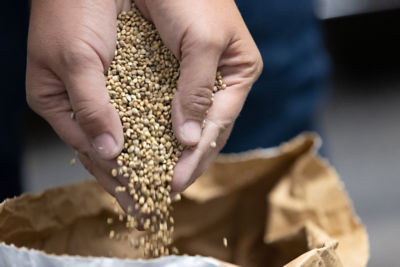Causal Agent
Melon necrotic spot virus (MNSV)
Vector
Olpidium bornovanus
Distribution
Worldwide
Symptoms
This virus has a narrow host range, affecting only melon, cucumber and watermelon. Symptoms initially appear on younger leaves as chlorotic spots, which soon become necrotic. In some cultivars, necrotic lesions and streaks develop on petioles and stems, indicating systemic infection. Leaves may curl and wilt, occasionally leading to complete plant collapse. Symptom intensity may vary considerably depending on cultivar. In watermelon, MNSV manifests as local lesions only.
 Symptoms of Melon necrotic spot virus infection may develop from the base of the leaf to the leaf margin (shown here).
Symptoms of Melon necrotic spot virus infection may develop from the base of the leaf to the leaf margin (shown here).
Conditions for Development
MNSV is transmitted by zoospores of the obligate fungal parasite, Olpidium bornovanus. MNSV has been shown to be seed-transmitted at low rates. This virus can also be mechanically transmitted by pruning, workers and equipment. Symptoms develop mainly under cool, low light conditions. In summer, infected plants may show no symptoms.
Control
Grow resistant cultivars, incorporate plant debris, fumigate soil and rotate out of cucurbits to manage this virus. Solarization has also been effective in favorable environments. Avoid excessive irrigation to minimize spread of the fungal vector. Surfactants added to irrigation systems may reduce zoospore numbers, thus minimizing spread of the vector in soil-less media. Grafting watermelon onto MNSV-resistant rootstocks is an effective cultural practice to control MNSV.



